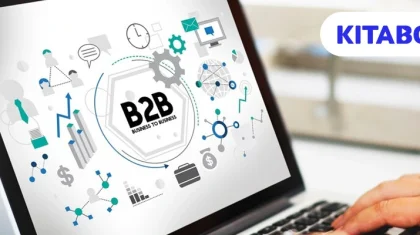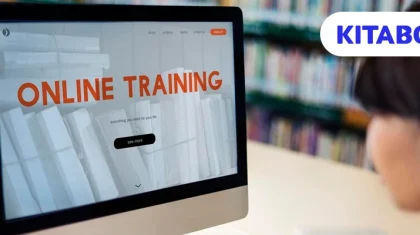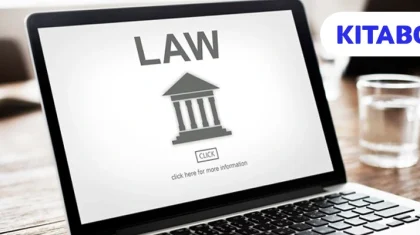
Assessing Student Learning: Integrating Formative Assessment In Lesson Development
In the realm of education, the dual challenge of maintaining student engagement and assessing their learning journey is ever-present.
As per research, students are engaged in academic activities for only 76% of classroom time, on average. It highlights the challenge of keeping students engaged and the need to use all available tools to optimize learning in that key period. Formative assessment emerges as a powerful tool in this context.
Rather than merely quantifying knowledge at the end of a teaching unit, formative assessment provides a continuous feedback loop, allowing educators to monitor and adapt to student needs in real time. This is where digital textbook platforms, such as KITABOO, come into play. With the help of KITABOO, crafting, publishing, and distributing DRM-protected content across multiple devices and platforms becomes a breeze.
In this post, we’ll explore the benefits and different ways to integrate formative assessment seamlessly into your lesson planning.
Let’s dive in!
Table of Contents
I. What is Formative Assessment?
II. What are the Benefits of Formative Assessment in Learning?
III. 5 Ways to Integrate Formative Assessment in Lesson Development
- Perform Pre-Assessment Activities
- Incorporate Think-Pair-Share Exercises
- Conduct Surprise Quizzes
- Deploy Exit Tickets
- Encourage Classroom Discussions
IV. Wrapping Up
What is Formative Assessment?
Formative assessment refers to a contemporary evaluation method that involves testing a student’s learning progress.
Unlike summative assessment, where the same is done after the completion of a particular course, curriculum, or term, formative assessment takes place while it’s ongoing. Apart from this, another noteworthy characteristic of this assessment is its low stake nature. This means that it doesn’t involve formal grading/scoring – the sole purpose is to evaluate learning effectiveness.
Some of the most common, day-to-day examples of formative assessment include conducting a quick poll in the class during a lesson, asking questions mid-lecture, etc.
There are several formative assessment tools that educators use to conduct formative assessments effectively. These tools range from traditional methods to modern digital solutions, and they aim to gather data on student understanding to promote active engagement in the long run.
What are the Benefits of Formative Assessment in Learning?
Formative assessment is slowly becoming a mainstream assessment strategy in schools. That’s certainly because it has ample advantages in store that can sum up to enhance the learning experience as a whole.
Below are some of the key benefits of formative assessment in learning:
1. Improves Learning Effectiveness
An active engagement not only captures students’ attention but also fosters deeper understanding. Such an involvement ensures students not just blindly take notes but also pay attention to grasping what’s actually being taught. Hence, guaranteed improvement in learning effectiveness!
2. Enhances Student Engagement
Studies show that only 46% of students feel engaged in school. In such a grave scenario, implementing techniques that stimulate student engagement is necessary.
In this regard, formative assessment can prove to be a vital supplement. By attracting active student participation in lessons, this assessment model provides exceptional results in enhancing student involvement and engagement.
3. Fosters Real-Time Student Assessment
A core characteristic of formative assessment is that it’s feedback-oriented. This means it enables teachers to get real-time feedback and progress-check of the students.
As a result, they can make more informed decisions and quickly work on efficient lesson development to weed out obstructions halting seamless learning and understanding.
5 Ways to Integrate Formative Assessment in Lesson Development
There are various stages in lesson development wherein you can seamlessly fuse formative assessment techniques to reap their advantages.
Below are some of the simplest yet most fruitful ways to integrate formative assessment into lesson development:
1. Perform Pre-Assessment Activities
Before you begin the lesson, conduct a little pre-assessment activity with your students to understand how far off they are with the topic. This is one of the best and most efficient formative assessment techniques. Best part? It’s also very uncomplicated and engaging. For instance, ask questions about your previous lesson, present brainstorming opportunities, distribute questionnaires, etc.
With the help of KITABOO, educators can design engaging pre-assessment activities tailored to the lesson’s objectives. This not only provides a clear picture of students’ prior knowledge but also sets the tone for the upcoming lesson.
2. Incorporate Think-Pair-Share Exercises
Formative assessments are always well-received by students because they are interactive yet knowledge-imparting. For example, take the “think-pair-share” exercise. Herein, students are introduced to a question and asked to reflect upon it individually. Then, they are partnered with a classmate for a group discussion on the same before finally sharing their answers with the class.
Such exercises facilitate effective student assessment while instilling crucial lifelong skills like critical thinking and communication.
3. Conduct Surprise Quizzes
In addition to formative assessments, consider incorporating summative assessments into your teaching strategy.
So, occasionally, conduct a surprise quiz in your class – just some basic MCQ-type questions revolving around a freshly taught lesson. This will help you keep track of a student’s progress while also giving you proper details about their level of comprehension and pain points.
4. Deploy Exit Tickets
Exit tickets are another fantastic way to integrate formative assessment into lesson development. In essence, they are just the opposite of pre-assessment activities.
To assess the students’ comprehension of the lesson, you can conclude by asking a few questions. Before they exit the class, conduct a quick rapid-fire session or play a small quiz with them. This will enable you to assess what they learned today and from where you need to start the next day.
5. Encourage Classroom Discussions
Last but never least, classroom discussions are also an essential formative assessment approach.
Thus, devise your lesson plans in a way that there remains some room for occasional classroom discussion. It’s important because such discussions not only unravel a student’s understanding of the subject. They also highlight errors and misconceptions, helping learning become more efficient.
You can use ebooks to make classroom discussions better by giving students access to lots of useful information and materials. This way, you can help students have better discussions in class and learn more effectively.
Wrapping Up
Incorporating formative assessment in education is beneficial in many ways. And implementing its techniques in day-to-day teaching is not rocket science, unlike how it sounds.
By utilizing the digital textbook platform – KITABOO, you can enhance the effectiveness of formative assessment in your lessons and ensure optimal student engagement and understanding. To know more, write to us at contact@kitaboo.com.
Suggested Reads:
Discover how a mobile-first training platform can help your organization.
Kitaboo is a cloud-based platform to create, deliver & track mobile-first interactive training content.



